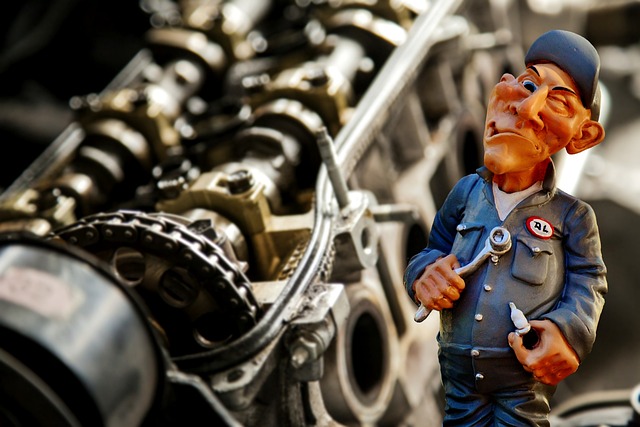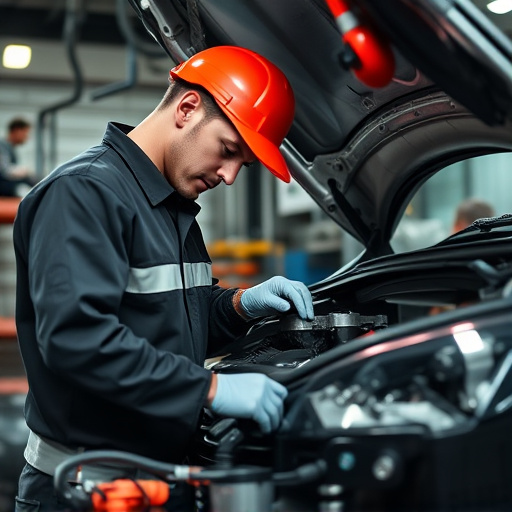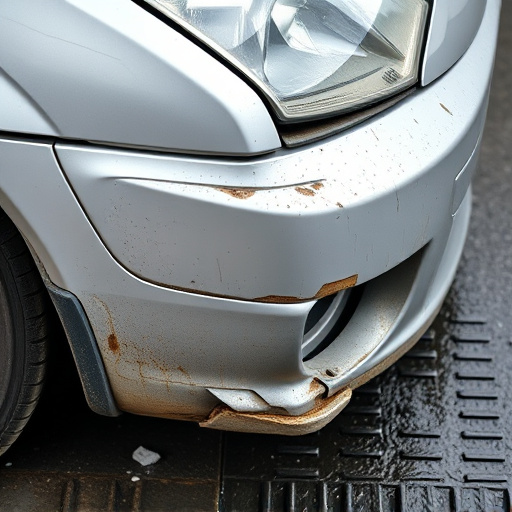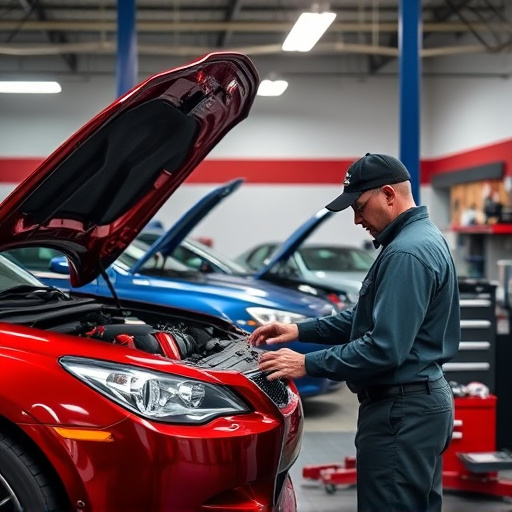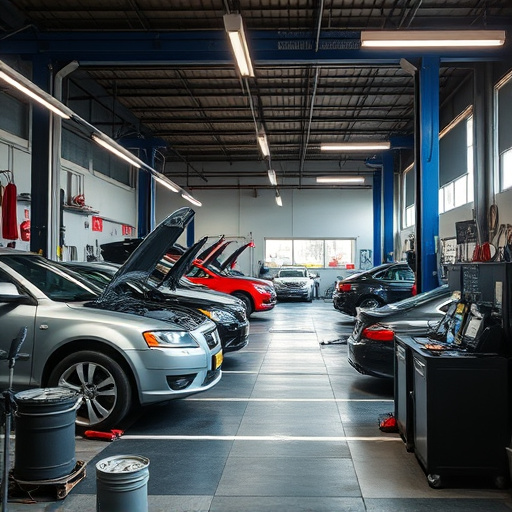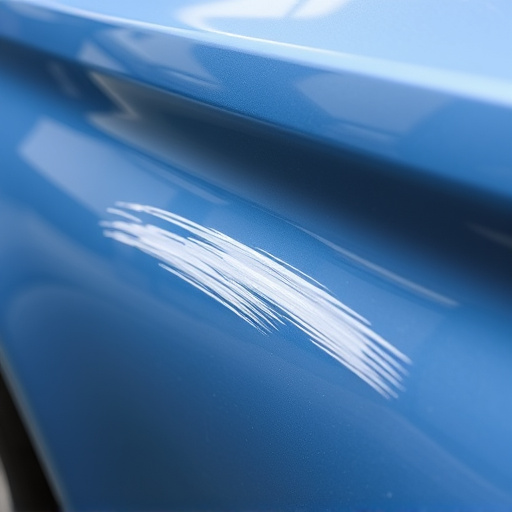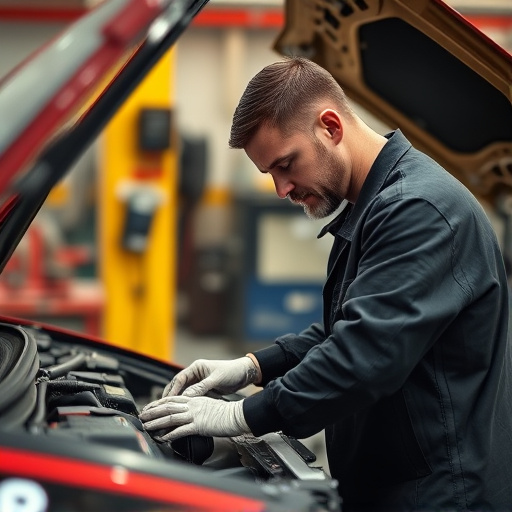Tesla major structural repairs require a meticulous approach due to their complex high-voltage systems. Disconnecting these systems is crucial for safety but introduces risks that must be managed carefully. Auto detailing professionals follow strict protocols, similar to those for intricate vehicle systems, to prevent short circuits and safeguard components during disassembly and reinstallation. Reputable collision centers specializing in Tesla repairs possess the expertise and equipment to safely isolate high-voltage components, ensuring structural integrity and minimizing risks while maintaining aesthetic value through expert restoration techniques.
Tesla owners often face a unique challenge when it comes to major structural repairs, as disconnection of the high voltage (HV) system is crucial. This comprehensive guide explores the intricate process, offering insight into Tesla’s advanced HV network and safety protocols. From understanding the system’s complexity to step-by-step repair procedures, we navigate the critical aspects of Tesla major structural repair, ensuring both effectiveness and safety for enthusiasts and professionals alike.
- Understanding Tesla's High-Voltage Systems: A Complex Network
- The Process of Major Structural Repair: Step-by-Step Guide
- Safety Measures and Considerations for Disconnecting High Voltage Components
Understanding Tesla's High-Voltage Systems: A Complex Network

Tesla’s high-voltage systems are a complex network designed to power their iconic electric vehicles. These systems are integral to the car’s functionality and safety, delivering electricity to components like the motor, battery pack, and various auxiliary systems. Disrupting this intricate web requires meticulous care, especially during a Tesla major structural repair.
When undertaking such repairs, auto detailing professionals must carefully consider the implications of high-voltage system disconnection. While necessary for addressing significant structural damage, it introduces risks and complexities. Proper protocols must be followed to ensure the safety of technicians and prevent potential short circuits or damage to sensitive components, mirroring the meticulous approach required in automotive repair for vehicles with intricate systems.
The Process of Major Structural Repair: Step-by-Step Guide
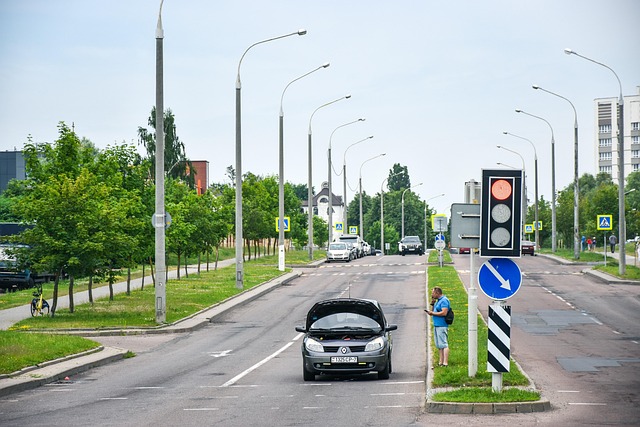
When undergoing a Tesla major structural repair, the process involves several meticulous steps to ensure both safety and effectiveness. It begins with a thorough inspection to identify damaged components, which may include the body panel, frame, or even the high-voltage system. Once identified, disassembly starts, carefully separating the affected area from the vehicle to gain access for repairs.
For instance, in a fender repair scenario, the process would entail detaching the damaged fender, removing any debris or loose parts, and preparing the surrounding panel for replacement. Subsequent steps involve acquiring compatible replacement parts, be it through original equipment manufacturer (OEM) or certified aftermarket sources. After ensuring the right fitment, the repair team proceeds with precise welding or bonding to reinstall the repaired or replaced component, followed by rigorous testing to verify structural integrity and, in Tesla’s case, high-voltage system functionality before final reassembly and customer handover. This meticulous approach guarantees that the vehicle not only drives safely but also retains its aesthetic appeal through an expert car restoration process.
Safety Measures and Considerations for Disconnecting High Voltage Components

When performing Tesla major structural repairs, disconnecting high-voltage components is a critical step that requires meticulous planning and stringent safety measures. With Tesla vehicles housing powerful electric systems, proper precautions are essential to prevent short circuits or electrical failures. Trained technicians must follow standardized protocols, ensuring all personnel are protected from potential hazards. This includes wearing suitable protective gear, utilizing insulated tools, and implementing ground control measures to divert any residual charge.
The process involves carefully detaching high-voltage cables, connectors, and relays, often requiring specialized equipment and knowledge. Auto collision centers specializing in Tesla repairs have the expertise and resources to handle these delicate procedures safely. By adhering to strict guidelines, they can effectively isolate the high-voltage system during the repair or replacement of structural components, minimizing risks associated with working on sensitive electrical systems.
Tesla major structural repairs necessitate a meticulous approach, especially when involving the high-voltage system. By understanding the complex network of these systems and following a structured guide for disconnection and reparation, technicians can ensure safety and maintain the integrity of the vehicle’s performance. This process is a game-changer in the automotive industry, highlighting the importance of specialized knowledge and safety protocols in handling Tesla’s advanced technology.
